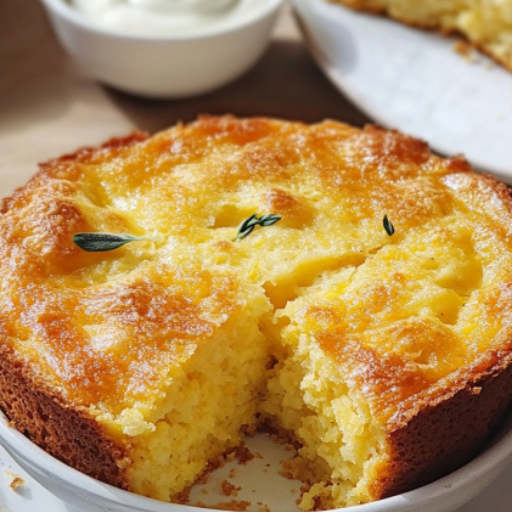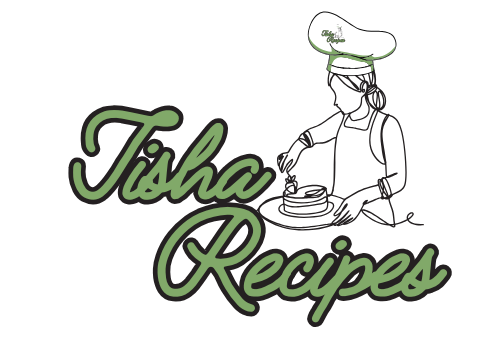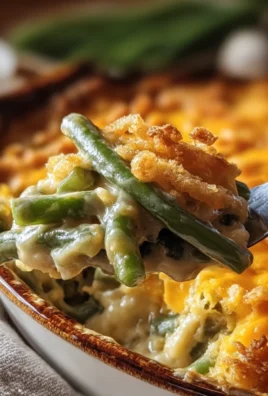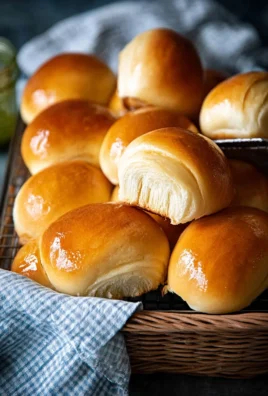
Baked Cornbread is a classic Southern dish that has won hearts all over the United States and beyond. This delightful dish is known for its golden crust and soft, fluffy interior. Originating from Native American cuisine, cornbread has become a staple, especially in the Southern United States.
It’s traditionally made from cornmeal, which gives it its distinct taste and texture. Whether served as a side dish or savored on its own, baked cornbread can complement a variety of meals. To perfect your cornbread, it’s essential to understand the balance of ingredients and the baking process.
Cornbread can be sweet or savory, allowing for a versatile dish that can be customized to fit any occasion. The history of cornbread is as rich as its flavor. Originally, cornbread was a simple mixture of cornmeal and water, cooked over an open flame.
Over the centuries, the recipe has evolved, with the addition of ingredients like eggs, milk, and baking powder.
Ingredients for Baked Cornbread
-
- 1 cup cornmeal
- 1 cup all-purpose flour
- 1/4 cup granulated sugar
- 1 tablespoon baking powder
- 1/2 teaspoon salt
- 1 cup milk
- 2 large eggs
- 1/4 cup melted butter
Instructions for Making Baked Cornbread
-
- Preheat your oven to 400°F (200°C).
- In a large bowl, whisk together the cornmeal, flour, sugar, baking powder, and salt.
- In a separate bowl, mix the milk, eggs, and melted butter until well combined.
- Pour the wet ingredients into the dry ingredients and stir until just combined.
- Grease a 9-inch round or square baking pan.
- Pour the batter into the prepared pan and spread it evenly.
- Bake for 20-25 minutes or until the top is golden brown and a toothpick inserted into the center comes out clean.
- Allow it to cool slightly before serving.
Nutritional Information
Cornbread is not only a delicious addition to your meal but also provides several nutritional benefits. A typical serving of baked cornbread contains roughly 180 calories, 6 grams of fat, 3 grams of protein, and 30 grams of carbohydrates.
Cornmeal is a good source of iron and magnesium, essential minerals that support various bodily functions. Additionally, cornbread is a decent source of dietary fiber, which aids in digestion.
However, the sugar content in traditional recipes can add up, making it important to consume in moderation, especially for those monitoring their sugar intake.
Cooking Tips and Variations
To achieve the perfect baked cornbread, consider these expert tips. First, ensure your ingredients are at room temperature before mixing; this allows for a smoother batter and even baking.
Another tip is to preheat your baking pan in the oven; pouring the batter into a hot pan helps form a crispy crust. If you prefer a sweeter cornbread, increase the sugar to 1/2 cup.
For a savory twist, consider adding ingredients like chopped jalapeños, shredded cheddar cheese, or cooked bacon bits. You can also experiment with different types of milk, such as buttermilk, to enhance the flavor and texture.
Remember, the key to moist cornbread is not overmixing the batter, which can lead to a dense texture.
Serving Suggestions
Baked cornbread is incredibly versatile and can be served in various ways to suit different meals. For a classic Southern meal, serve cornbread alongside dishes like fried chicken, collard greens, or barbecue ribs. It also pairs beautifully with chili, making it a popular choice for cold weather comfort food.
For a lighter option, try serving cornbread with a salad or a bowl of soup. Cornbread can also be transformed into a dessert by adding ingredients like honey, cinnamon, or a drizzle of maple syrup. When serving cornbread, consider cutting it into wedges or squares for easy distribution.
Whether you’re hosting a gathering or enjoying a quiet meal at home, cornbread’s versatility makes it a delightful addition to any table.
Baked Cornbread Health Benefits
Cornbread offers several health benefits, primarily due to its main ingredient: cornmeal. Cornmeal is rich in complex carbohydrates, providing a steady source of energy. It is also a good source of fiber, aiding in digestion and promoting a healthy gut.
Cornbread is naturally gluten-free if made with cornmeal and gluten-free flour, making it suitable for those with gluten sensitivities. Additionally, cornmeal contains antioxidants, which can help reduce inflammation and support heart health. However, traditional recipes may include added sugars and fats, so it’s beneficial to enjoy in moderation.
Consider reducing sugar or opting for healthier fat alternatives like olive oil for a more health-conscious version.
FAQs About Baked Cornbread
Can I make cornbread without eggs?
Yes, you can substitute eggs with applesauce, mashed bananas, or a commercial egg replacer to maintain moisture and binding.
How do I store leftover cornbread?
Store leftover cornbread in an airtight container at room temperature for up to 3 days, or freeze for longer storage.
Can I use whole wheat flour instead of all-purpose flour?
Yes, you can use whole wheat flour for a healthier option, but it may result in a denser texture. Consider using a 50/50 mix with all-purpose flour.
Baked cornbread is a timeless recipe that brings warmth and comfort to any meal. Whether you’re enjoying it as a side dish or a stand-alone treat, its versatility and ease of preparation make it a favorite for many. By following this guide, you can achieve the perfect balance of golden crust and moist interior every time. Don’t be afraid to experiment with flavors and ingredients to make the recipe your own. Enjoy the simplicity and deliciousness of baked cornbread at your next meal.




Leave a Comment